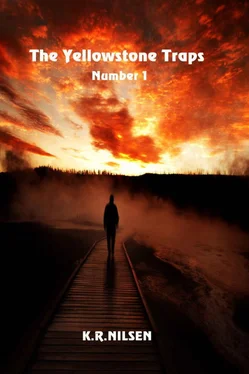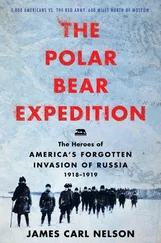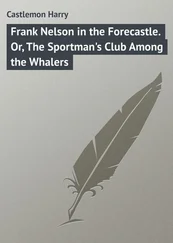Nothing looked remotely familiar. There were no landmarks to gauge where she was within the former park. The Gallatin Range to the west was an indistinct undulating series of humps, its prominent folds and creases filled in by pyroclastic sheet flows.
After months analyzing seismic and ash sample data and weeks pouring over photography and ash fall depth measurements across the country, the CVO team she was with had developed a portrait of the true extent of the Yellowstone eruption and caldera collapse.
When the first images of the new crater were downloaded, vulcanologists and geologists the world over stood in awe of them. The chasm created by the sinking of Yellowstone’s terrain into the empty upper magma chamber covered an area nearly twenty percent larger than the known dimensions of the former Lava Creek caldera that encompassed half of the national park. Using early raw figures to determine the extent of the ejected material from the eruption, CVO scientists estimated that no less than 1,800 cubic miles and perhaps as much as 2,200 cubic miles of volcanic deposits, from rock bombs, to pumice, to ash and fine dust, had vented from gaping fissures and vents around the oval dimensions of the caldera. A quick set of calculations and the team determined that the volume of ejected material, if it had all fallen within the dimensions of the state of Wyoming, would have smothered the entire state under no less than fifteen feet of ash and debris.
The superheated pyroclastic clouds billowing from the exploding caldera reached as far as 400 miles from their origin, southwest to Salt Lake City, north far into Idaho and Montana, and southeast across the Great Divide to within striking distance of the western city limits of Denver. Inside the pyroclastic flow zones, there was little evidence that anything had survived the catastrophe.
The preliminary ashfall profiles were overwhelming. Surrounding the crater and encompassing an area the size of the state of Ohio, ash accumulations were catastrophic, amounting to hundreds of vertical feet in many regions. So much material was heaped up that the land remained hot, the upper layers of ash acting as a thermal blanket trapping the heat of the pyroclastic flows and the super dense ash falls well below the surface. Where Liz stood, snow melted on contact with the ash, so much heat was finding its way to the surface from buried hot deposits below.
Further out, up to 500 miles from the epicenter of the eruption, ash depths ranged from eight to a dozen feet. Twice as far away and primarily to the east, ash accumulated in some locales as deep as three, four and five feet. Pushed by the prevailing westerlies, ash up to a foot in depth fell as far to the east as Madison, Wisconsin and Springfield, Illinois. Accumulations of up to several inches brought choking dust to the streets of Chicago; Grand Rapids, Michigan; Terre Haute, Indiana and Memphis, Tennessee.
To the west and southwest, the regions fared better as winds aloft carried much of the ash burden away into the Great Plains and Midwest. But the pyroclastic clouds scorched most of Montana and Idaho and much of Washington State well west of Yakima city but east of the Cascade Range. The devil’s veil of death swept the living away in western Oregon, northeastern Nevada, Utah south to I-70, and in the northwestern quadrant of Colorado, from Grand Junction through to Denver and north to Ft. Collins. As for most of Wyoming, Liz couldn’t imagine anything larger than a bacterium surviving the blowtorch clouds.
Over the course of her career, Liz had met many of the monsters of geology, the remains of catastrophic eruptions that raged in the deep and not so distant past: seawater-flooded Toba caldera; Santorini, the villain that erased the Minoan culture; the little bad-tempered infant island known as Anak Krakatoa, hiding the wreckage of the famed Krakatoa explosion in the late 1800s, and beautiful Crater Lake, the placid liquid child of massive Mount Mazama, a Rainier-sized volcano that had disintegrated in a flash and incinerated an area the dimensions of West Virginia.
Gamblers at Reno, Liz was fond of telling acquaintances, liked to drive up to the rim country around Lake Tahoe to marvel at its majestic symmetry and delight in its brilliant blue waters, filling a basin once ringed with sentinel peaks of fire. Sometime in the future, Yellowstone would clothe itself in forests again, the trees standing before a huge, frigid lake that would dwarf Lake Tahoe. And like Tahoe, Yellowstone’s future lake would sport a perfectly round conical island, perhaps several of them, new volcanic cones whose only purpose would be to slowly fill in the sunken basin once again and set the Yellowstone country on a course for yet another geological cataclysm.
For now, it was just enough to stand before the blackened monster, resting fitfully in the land. Before her stretched a laboratory of such grand scale it would surely swallow up the remainder of her career—that is, if she still had a career.
In the aftermath of this disaster, would anyone anywhere care to fund the long-range study of the new caldera when the first order of business for most of the nation’s citizens was to try to hoard a few calories against the stalking specter of starvation? Would there even be a single thought given to the staffing and funding requirements of university geology departments when there was a massive cancer in the body of the nation that had already consumed half its flesh?
None of the business of livelihood mattered in the least now. Confronted with the enormity of the Yellowstone cataclysm, Liz felt chaste, her soul hollowed out. Feet on the lip of geological ground zero, the only image she could process was that of her daughter’s face, the only emotion that of overwhelming isolation.
White Elk had foreseen this. What did he say? She would find nothing at Yellowstone. ‘Empty,’ that was the word he’d used.
Liz seated herself in the volcanic grit, planted the heels of her boots firmly down, crossed her forearms over her knees, and put her head down to rest on her arms. The impoundment holding back her misery, the one her conflicted soul had fabricated to wall her emotions away from Pelee’s horrible death, gave way all at once, and the tears began to flow in a torrent.
Chapter One Hundred-Eighteen
The atmosphere persisted in a sullen state, damped down under a seamless quilt of moisture-poor snow clouds that hung over the Plains day after day throughout the month of October. Water vapor floated imprisoned, locked in needles of ice crystal, drifting aimlessly. The monotony of the Yellowstone-induced weather strangled the spirit of the Independency colonists. All were anxious for the arrival of the final grain shipment from Sweetly. Penny was planning a celebration to lift and brighten their spirits, one to celebrate their continued existence as a community on Prospect Bluffs.
An hour after sunrise on the morning of the third Thursday of the month, dozens of Independency villagers made the descent to the lake shoreline below the bluffs to see the tiny freighter and its crew off. The steamer lay locked fast in ice, however. Bitter early fall temperatures had welded black plates of lake ice an inch thick across the entire surface of the watery expanse. Max fretted the wood-fired lake steamboat might not be able to break through the ice barrier while towing the barge, made larger and more stable by the addition of newly fabricated pontoons and expanded decking. Men and women swung axes, crowbars and spitting mauls to free the vessels from their ice shackles. Max coaxed a fire to life in the cold boiler and slowly built steam pressure. Satisfied with the ice work and the strength of the head of steam, the town’s jack-of-all-trades opened a value to funnel steam to piston so that the propeller might be engaged . The tug labored mightily to gain a knot or two of momentum. The ice crackled, split and parted before the bow, and the little ship made way.
Читать дальше










